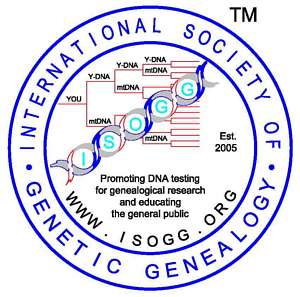Back to Y-DNA Tree Trunk
Back to SNP Index
Back to Papers/Presentations Cited
Back to Glossary
Back to Listing Criteria
Copyright 2015. International Society of Genetic Genealogy. All Rights Reserved.

The entire work is identified by the Version Number and date given on the
Main Page. Directions for citing the document are given at
the bottom of the Main Page.
Version History Last
revision date for this specific page: 15 October 2015
Because of continuing research, the structure of the Y-DNA Haplogroup Tree changes and ISOGG does its best to keep the tree updated with the latest developments in the field. The viewer may observe other versions of the tree on the Web. Email Ray H. Banks if the differences need clarification or if you find any broken links on this page.
| LINKS: Main Page Y-DNA Tree Trunk SNP Index Papers/Presentations Cited Glossary Listing Criteria |
| CLADE/SUBCLADE SYMBOLS: Added Redefined |
| SNP SYMBOLS: Not on 2014 tree Confirmed within subclade Provisional Private Investigation |
The criteria for a representative SNP printed in bold for a subclade is: traditional usage, testing one in multiple labs, and/or being found in the area of the chromosome used in recent research studies.
SNPs listed below in italics (colored black or red) are quality variants from next-generation sequencing reports consistently showing as representing that subgroup.
Paragroups, subclades ending with an asterisk (*) indicate that some individuals do not test positive for any snps downstream. Since this fact is commonly known, paragroups are being omitted to simplify the display of SNPs.
Contact Person for Haplogroup L: Gareth Henson
L M20/PF5570,
L855, L863, L878/PF5524, L879/PF5697, M11, M61/Page43, M185/PF5755, PF5528, PF5532, PF5539,
PF5554, PF5557, PF5563, PF5564, PF5583, PF5683, PF5692, PF5693, PF5699, PF5705, PF5715, PF5717, PF5720, PF5723, PF5729,
PF5737, PF5743, PF5747, PF5754, PF5756, PF5757, PF5771, PF5773, PF5779, PF5790, PF5791, PF5804, PF5810, PF5813, PF5815,
PF5821, PF5823, PF5829, PF5830, PF5832, PF5833, PF5839
•
L1 M22, L656, L1304, M295, Page121
• •
L1a M2481, M2565, M2605, M2664,
Y5525/Z20163, Y5560/Z20168
• • •
L1a1 M27, M76, P329
• • •
L1a2 M357, L1307
• •
L1b M317, L655
• • •
L1b1 M349
• • •
L1b2 M274
•
L2 L595
Private SNPs - After investigation these SNPs have not met the population distribution criteria for placement on the tree: either too few confirmed positive testers have been found OR multiple confirmed testers were confined to a single surname or to a small group of related males.
SNPs under Investigation - Additional testing is needed to confirm adequate positive samples and/or correct placement on the tree.
Y-DNA haplogroup L is found at low frequencies in the Middle East and Europe as paragroup L-M317 (L1b*, originally L2*), subgroup L-M349 (L1b1, originally L2a) and subgroup L-L595 (L2), and at significant frequencies in South Asia as subgroups L-M27 (L1a1, formerly L1a and originally L1) and L-M357 (L1a2, formerly L1c and originally L3).
NOTES:
References:
Balanovsky et al,
Parallel Evolution of Genes and Languages in the Caucasus Region.
Molecular Biology and Evolution, 13 May 2011.
Behar et al,
Contrasting Patterns of Y Chromosome Variation in Ashkenazi Jewish and Host
Non-Jewish European Populations. (pdf) Hum Genet 114:354-365, 2004.
Behar et al,
Genome-Wide Structure of the Jewish People.
Nature, 446:238-42, 2010.
Cinnioglu et al,
Excavating Y-chromosome Haplotype Strata in Anatolia. (pdf) Human Genetics. 114:127-148, 2004.
Cruciani et al,
A Back Migration from Asia to Sub-Saharan Africa Is Supported
by High-Resolution Analysis of Human Y-Chromosome Haplotypes.
American Journal of Human Genetics, 70:1197-1214, 2002.
Deng et al, Evolution
and Migration History of the Chinese Population Inferred from the Chinese Y-chromosome Evidence.
(pdf) Journal of Human Genetics, 49:339-348, 2004.
Francalacci et al,
Low-Pass DNA Sequencing of 1200 Sardinians Reconstructs European Y-Chromosome Phylogeny.
Science: Vol. 341 no. 6145, pp. 565-569, DOI: 10.1126/science.1237947, 2 August 2013.
Hallast et al, The
Y-chromosome Tree Bursts into Leaf: 13,000 High-confidence SNPs Covering the Majority of Known Clades,
Molecular Biology and Evolution, doi: 10.1093/molbev/msu327, 2014.
Karafet et al,
New Binary Polymorphisms Reshape and Increase Resolution of the Human Y-Chromosomal Haplogroup
Tree. Abstract. Genome Research, published online April 2, 2008.
Supplementary Material.
Karafet et al,
Paternal Population History of East Asia: Sources, Patterns,
and Microevolutionary Processes. (pdf) American Journal of Human Genetics,
69:615-628, 2001.
Kivisild et al,
The Genetic Heritage of the Earliest Settlers Persists in Both Indian Tribal and Caste
Populations. (pdf) American Journal of Human Genetics, 72:313-332, 2003.
Mohyuddin et al,
Detection of novel Y SNPs Provides Further Insights into Y chromosomal Variation in Pakistan.
Journal of Human Genetics, 2006.
Regueiro et al,
Iran: Tricontinental Nexus for Y-Chromosome Driven Migration. (abstract)
Human Heredity, Vol. 61, No 3, 132-143, 2006.
Sengupta et al,
Polarity and Temporality of High Resolution Y-chromosome Distributions in India
Identify Both Indigenous and Exogenous Expansions and Reveal Minor Genetic Influence
of Central Asian Pastoralists. (pdf)
American Journal of Human Genetics, 78:202-221, 2006.
Shen et al, Reconstruction
of Patrilineages and Matrilineages of Samaritans and other Israeli Populations from Y-Chromosome
and Mitochondrial DNA Sequence Variation. (pdf) Human Mutation, 24:248-260, 2004.
Thangaraj et al,
Genetic Affinities of the Andaman Islanders, a Vanishing Human Population. (pdf)
Current Biology, 13:86-93, 2003.
Zhao et al,
Presence of Three Different Paternal Lineages among North Indians: A Study of 560 Y Chromosomes. (abstract)
Annals of Human Biology, 36(1):46-59, 2009.
Additional Resources:
ISOGG Wiki - What you need to know about Genetic Genealogy.
The Y-Haplogroup L Project, Gareth Henson, Peter Hrechdakian.
Corrections/Additions made since 1 January 2015:
| Back to Main Page Back to Y-DNA Tree Trunk Back to SNP Index Back to Papers/Presentations Cited Back to Glossary Back to Listing Criteria Copyright 2015. International Society of Genetic Genealogy. All Rights Reserved. |

|